Managing multiple cloud environments can be like juggling with your eyes closed, it’s possible, but stressful and prone to mistakes. As businesses increasingly adopt multi-cloud and hybrid strategies, the challenge isn’t just deploying cloud resources, but keeping them secure, cost-efficient, and aligned with business goals. Cloud Management Platforms (CMPs) can help with this.
They act as a central control hub, giving IT teams a single pane of glass to monitor performance, manage workloads, control spending, and ensure compliance across all cloud providers. From startups aiming for lean operations to enterprises handling massive infrastructures, CMPs have become a cornerstone for effective cloud governance.
What Is a Cloud Management Platform?
At its core, a CMP provides centralized visibility and control over multi-cloud or hybrid environments. Key features typically include :
- Automation: Streamlines provisioning, scaling, and lifecycle management of cloud resources without manual intervention.
- Cost & Performance Reporting: Tracks usage, forecasts spending, and supports optimization with chargeback/showback capabilities.
- Security & Governance: Ensures compliance, enforces policies, and monitors for potential security risks.
- Monitoring & Logging: Provides real-time observability, performance tracking, and alerts across environments.
- Centralized Management: Combines multiple cloud controls into a single dashboard for easier administration.
As organizations scale, CMPs reduce complexity, enhance security, cut costs, and accelerate cloud adoption, making them essential for modern IT strategy .
Why CMPs Are Mission-Critical
- Rising Costs & Complexity: Cloud spending can spiral out of control. CMPs offer cost governance, rightsizing, and budget controls to keep spend in check .
- Multi-Cloud & Hybrid-Cloud Realities: Organizations increasingly run workloads across AWS, Azure, GCP, private clouds, containers, and edge environments. CMPs help unify workflows and management .
- Compliance & Security: From regulatory mandates to internal policies, CMPs provide continuous monitoring and automated enforcement of security and governance standards .
- DevOps & Infrastructure Automation: CMPs integrate with IaC, operational workflows, and CI/CD pipelines enabling faster provisioning and fewer manual steps .
- AI & Edge Demands: As AI workloads scale and edge deployments proliferate, organizations need advanced orchestration and monitoring beyond traditional CMP capabilities .
List of Top Cloud Management Platforms
1. Morpheus Data
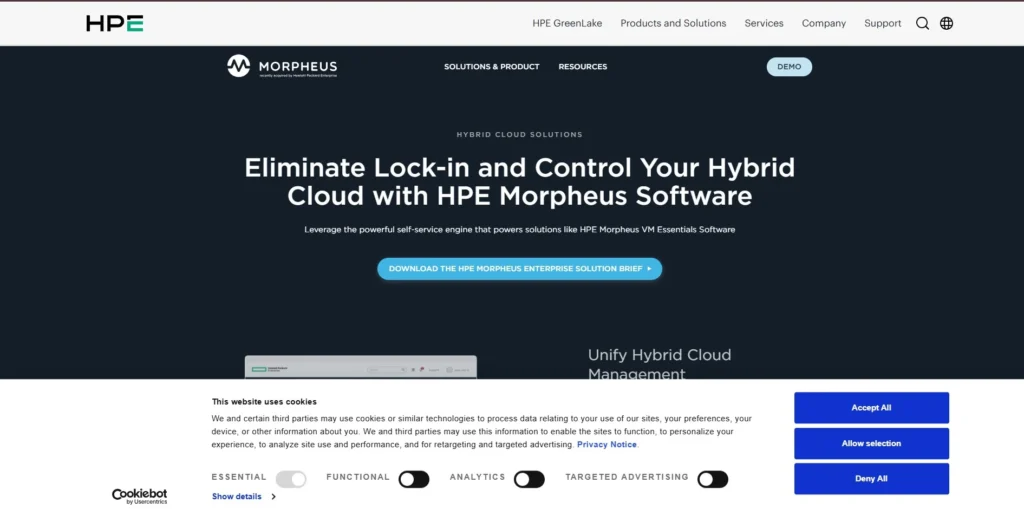
Website: https://morpheusdata.com
Morpheus Data is a powerful, enterprise-grade cloud management and orchestration platform designed to unify hybrid and multi-cloud operations. Since its launch in 2015, it has become one of the most flexible CMPs, offering over 90 native integrations with public clouds, private clouds, and infrastructure automation tools. It supports AWS, Azure, Google Cloud, VMware, Nutanix, and bare-metal environments, allowing seamless workload migration and management.
Its API-first design makes it easy to integrate into existing IT workflows, enabling both developers and operations teams to work from a single interface. Morpheus remains a go-to choice for enterprises that need automation, governance, and DevOps alignment in complex cloud environments.
Key Features
- Unified self-service deployment portal
- Multi-cloud integration and orchestration
- Built-in cost tracking and optimization
- IaC support (Terraform, Ansible, Chef, Puppet)
- Policy-based security and compliance
Best For:
Large enterprises, service providers, and DevOps teams managing hybrid and multi-cloud environments.
2. CloudBolt
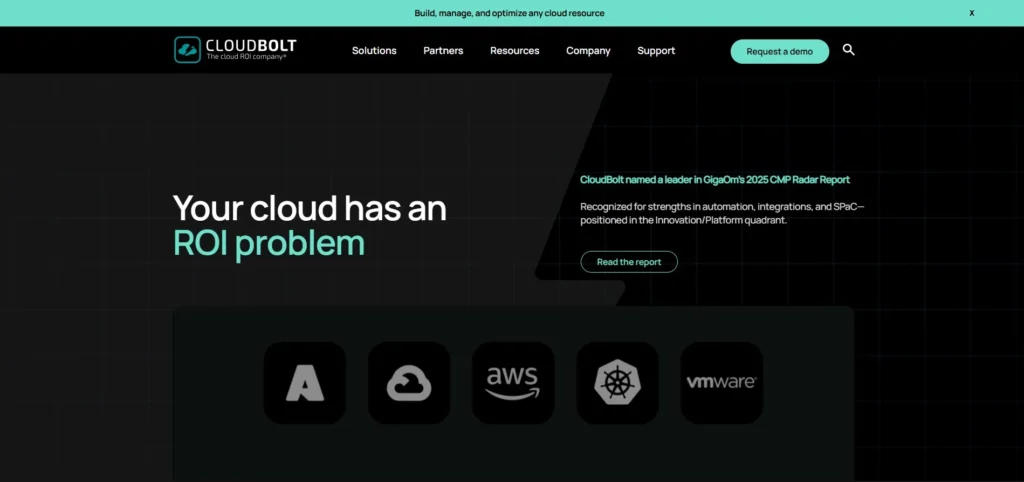
Website: https://www.cloudbolt.io
CloudBolt is a leading hybrid cloud management platform that enables IT teams to deliver self-service infrastructure, enforce governance, and optimize costs across multiple environments. It supports AWS, Azure, Google Cloud, VMware, OpenStack, and Kubernetes, making it versatile for both traditional and cloud-native workloads. Its intuitive interface allows organizations to automate provisioning, manage resources, and integrate with DevOps toolchains.
CloudBolt’s strength lies in combining cost visibility with infrastructure orchestration, ensuring organizations stay agile without overspending. It’s a favorite among enterprises adopting a multi-cloud strategy with strict governance needs.
Key Features
- Self-service provisioning with RBAC
- Unified hybrid cloud orchestration
- Cost tracking and budget alerts
- Kubernetes and container integration
- Policy-driven governance
Best For:
Organizations running a mix of public, private, and container-based workloads with a focus on cost optimization and governance.
Suggested: Employee Recognition Software
3. Cloudstack
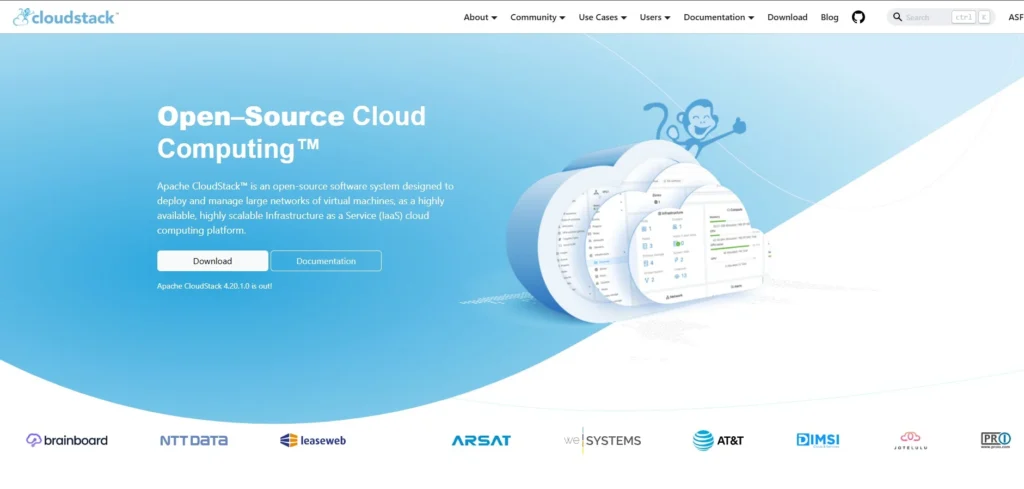
Website: https://cloudstack.apache.org
Apache CloudStack is an open-source Infrastructure-as-a-Service (IaaS) platform that offers robust orchestration for creating and managing large-scale private, public, and hybrid clouds. It supports multiple hypervisors, including VMware, KVM, and XenServer, and provides an API compatible with AWS EC2 for interoperability. Its open architecture makes it highly customizable, appealing to organizations that prefer avoiding vendor lock-in.
CloudStack continues to attract service providers, telcos, and enterprises looking for a free yet enterprise-ready alternative to commercial CMPs. With its proven scalability, it can manage thousands of hosts across multiple data centers.
Key Features
- Open-source and vendor-neutral
- Multi-hypervisor support
- AWS-compatible API
- Scalable multi-tenant architecture
- Advanced network and storage management
Best For:
Service providers, telcos, and enterprises seeking a free, customizable cloud orchestration solution.
4. IBM Cloudability (Apptio)
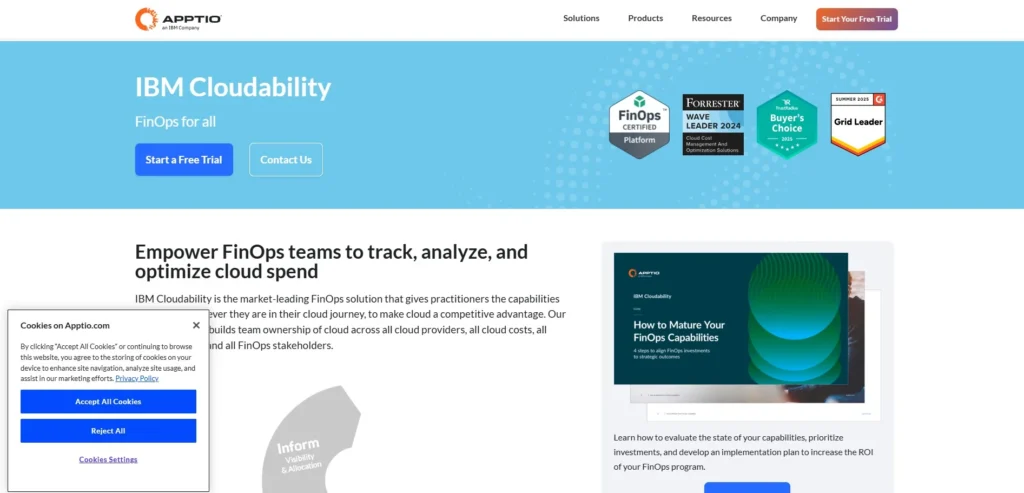
Website: https://www.apptio.com/products/cloudability
IBM Cloudability, part of Apptio, is a SaaS-based cloud financial management platform designed to help organizations monitor, optimize, and govern cloud costs. It supports AWS, Azure, Google Cloud, and hybrid environments, offering detailed cost analytics for IT, finance, and business teams. Cloudability excels at FinOps adoption, enabling chargeback/showback, budget forecasting, and rightsizing recommendations.
It remains a go-to choice for large enterprises needing deep financial insights into their cloud operations, ensuring that spending aligns with business value.
Key Features
- Multi-cloud cost analytics
- Rightsizing and optimization insights
- Budget tracking and forecasting
- Chargeback/showback reporting
- FinOps best practices integration
Best For :
Large organizations adopting FinOps practices for precise cloud cost management.
5. Nutanix Cloud Manager
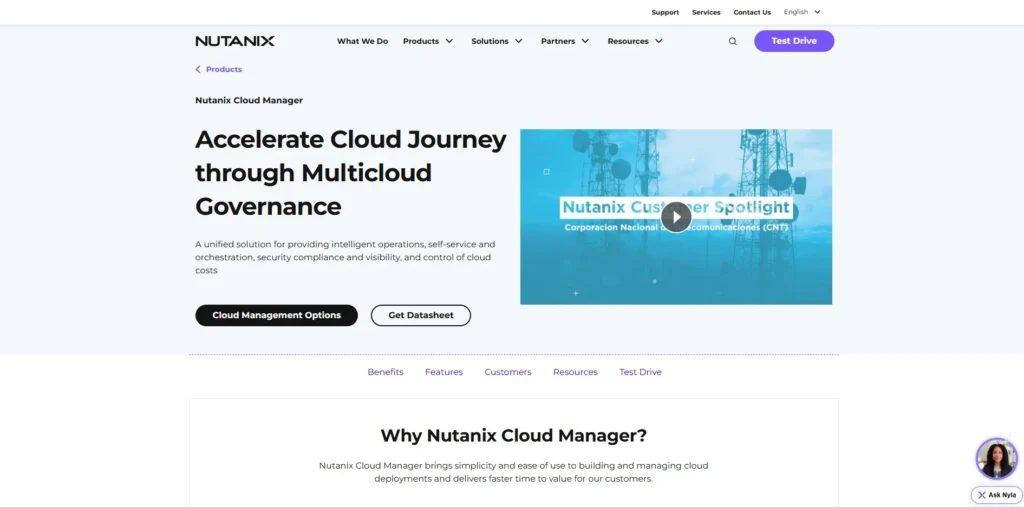
Website: https://www.nutanix.com/products/cloud-manager
Nutanix Cloud Manager provides unified automation, governance, and cost optimization for hybrid and multi-cloud environments. Designed for Nutanix’s hyper-converged infrastructure, it also supports AWS, Azure, and other public clouds. The platform simplifies workload deployment, automates lifecycle management, and enforces compliance policies.
It incorporates AI-powered suggestions for cost reduction and performance optimisation. It’s a natural choice for organizations already invested in Nutanix technology, helping them bridge private and public cloud management from a single console.
Key Features
- Unified hybrid cloud operations
- AI-driven cost optimization
- Automated provisioning and governance
- Nutanix HCI integration
- Multi-cloud compatibility
Best For:
Enterprises using Nutanix infrastructure seeking seamless hybrid cloud management.
6. BMC Multi-Cloud Management
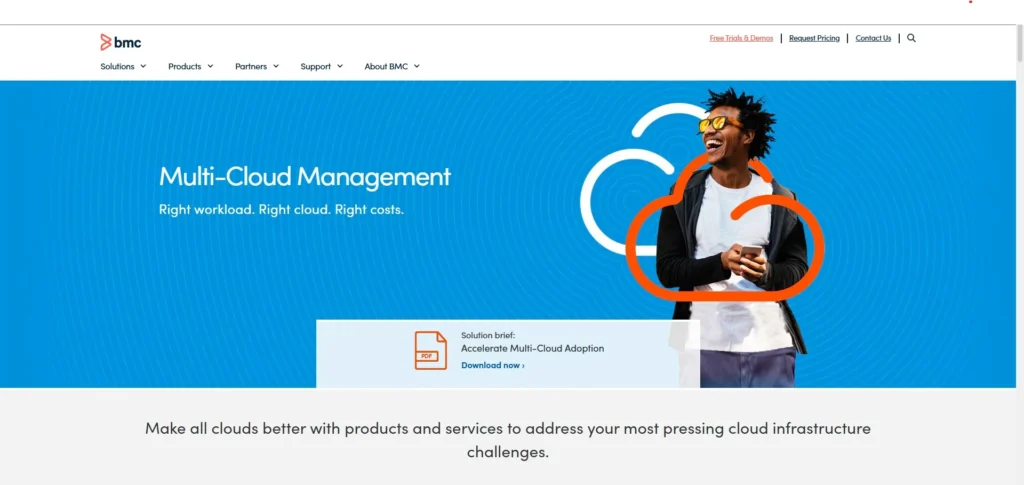
Website: https://www.bmc.com/it-solutions/multi-cloud-management.html
BMC Multi-Cloud Management is an enterprise-grade solution designed for large organizations operating in complex, regulated environments. It focuses heavily on governance, compliance, and operational control across AWS, Azure, Google Cloud, and on-premise infrastructures.
The platform provides automated service provisioning, intelligent cost optimization, and security policy enforcement. Its integrated dashboards allow IT teams to monitor performance, control access, and streamline workflows from a central location. It remains a trusted choice for businesses needing strict operational oversight and service reliability.
Key Features
- Centralised multi-cloud governance
- Automated provisioning and lifecycle management
- Integrated performance monitoring
- Budgeting and cost controls
- Compliance policy enforcement
Best For:
Enterprises in regulated industries needing high-level control, compliance, and operational transparency.
7. CoreStack
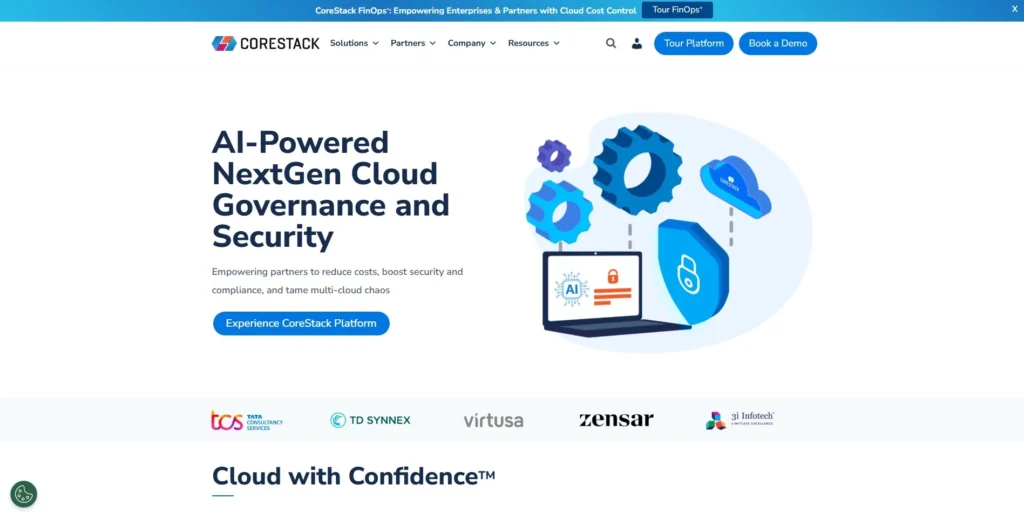
Website: https://www.corestack.io
CoreStack is a next-generation cloud governance platform that leverages AI to deliver proactive compliance, security, and cost optimization. It supports AWS, Azure, Google Cloud, and hybrid setups, offering enterprises the ability to automate policy enforcement and ensure resources meet industry standards.
CoreStack also provides continuous cloud posture assessment, helping organizations reduce risks and improve operational efficiency. It is particularly favored by enterprises in finance, healthcare, and government sectors where compliance and cost control are mission-critical.
Key Features
- AI-powered governance and compliance
- Multi-cloud cost optimization
- Continuous security posture monitoring
- Automated policy enforcement
- Audit-ready reporting
Best For:
Security-conscious organizations in highly regulated sectors looking for proactive cloud governance.
8. Flexera One
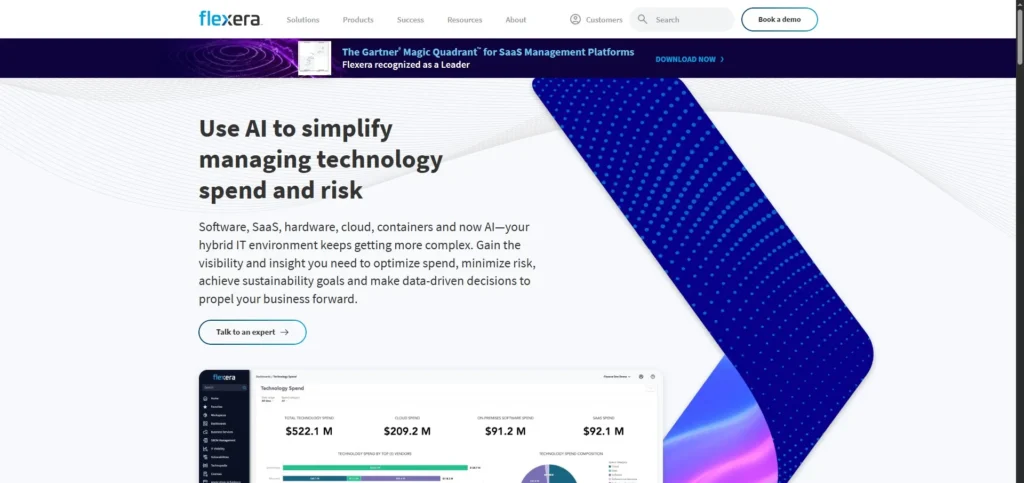
Website: https://www.flexera.com
Flexera One is a comprehensive IT asset and cloud management platform designed to optimize hybrid IT environments. It provides deep cost visibility, rightsizing recommendations, and policy automation for AWS, Azure, and Google Cloud workloads.
Flexera integrates financial, operational, and security data to give IT leaders full control over their cloud spend. It stands out for its ability to manage both on-premises and cloud resources, making it a strong choice for organizations transitioning to a hybrid model.
Key Features
- Unified IT asset and cloud cost management
- Rightsizing and usage optimization
- Policy-driven automation
- Detailed cost forecasting
- Hybrid IT support
Best For:
Enterprises balancing on-prem and cloud resources with a focus on cost efficiency.
9. Red Hat CloudForms
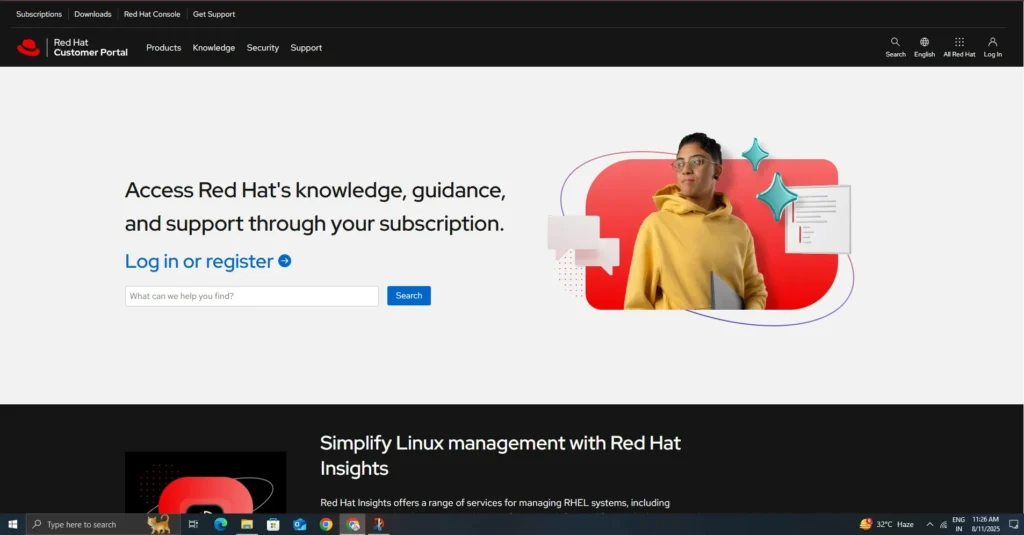
Website: https://www.redhat.com/en/technologies/management/cloudforms
Red Hat CloudForms, built on the open-source ManageIQ project, provides a robust hybrid cloud management framework with deep integration into Red Hat OpenShift and other Kubernetes platforms. It supports VMware, OpenStack, AWS, Azure, and Google Cloud, offering unified provisioning, compliance, and lifecycle management.
CloudForms is particularly valuable to organizations with heavy container adoption, providing governance and automation for both virtual machines and containerized workloads.
Key Features
- Open-source hybrid cloud management
- Deep OpenShift and Kubernetes integration
- Multi-cloud provisioning and orchestration
- Compliance and governance controls
- Lifecycle automation
Best For :
Kubernetes-focused enterprises that value open-source flexibility and multi-platform support.
10. Scalr
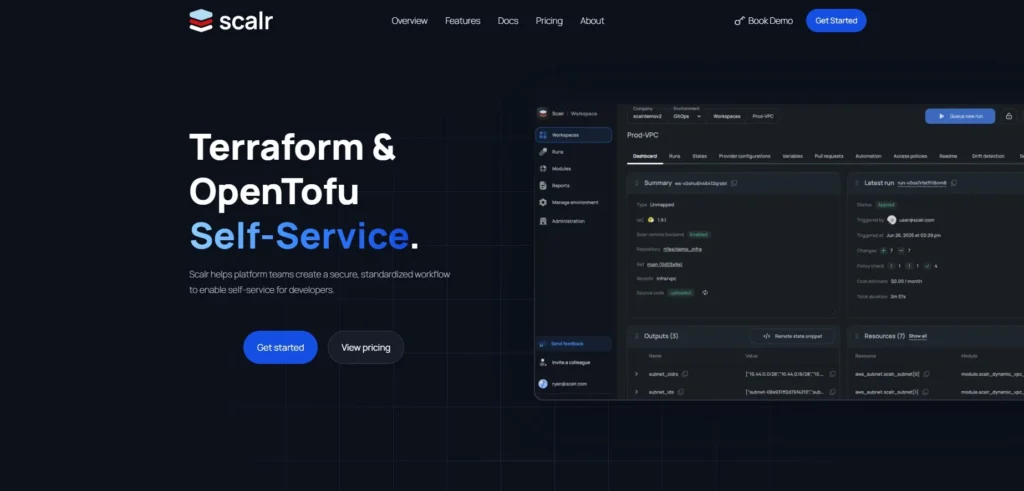
Website: https://www.scalr.com
Scalr is a cloud management and policy-as-code platform built for large-scale, multi-cloud infrastructure deployments. It enables organizations to manage infrastructure provisioning across AWS, Azure, and Google Cloud using Terraform while enforcing governance through its policy engine.
Scalr integrates seamlessly with DevOps workflows, ensuring that developers maintain speed while compliance teams retain control. In t’s a top pick for cloud-native teams that rely heavily on Infrastructure as Code practices.
Key Features
- Policy-as-code governance
- Native Terraform integration
- Multi-cloud infrastructure provisioning
- Role-based access control
- Cost tracking and reporting
Best For:
Cloud-native teams using Terraform at scale and requiring centralized policy enforcement.
11. Spectro Cloud Palette
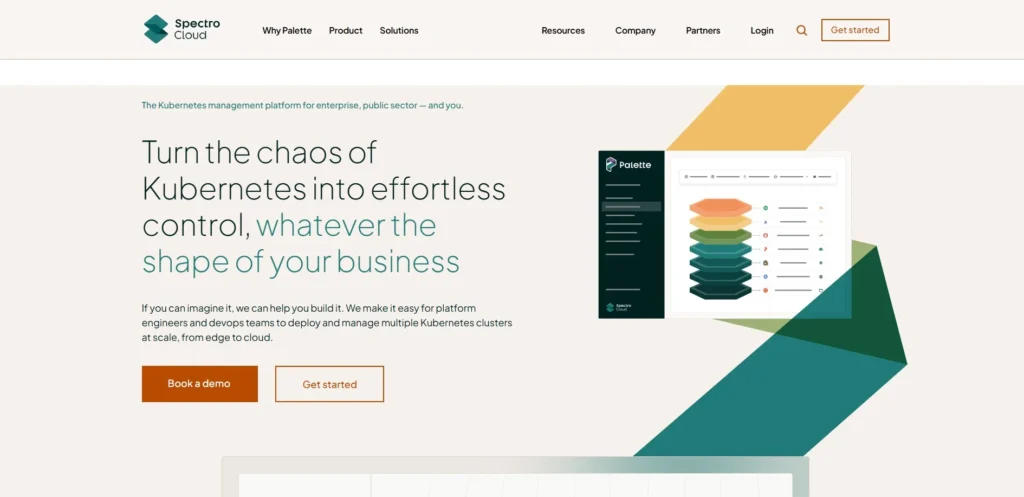
Website: https://www.spectrocloud.com
Spectro Cloud Palette specializes in Kubernetes management across on-premises, public clouds, and edge locations. It offers full-stack lifecycle management for containerized workloads, including cluster provisioning, upgrades, and monitoring. The platform embraces a GitOps approach, allowing configuration to be managed as code for consistency and repeatability.
It is especially attractive to enterprises running large-scale Kubernetes deployments and seeking granular control over cluster configurations.
Key Features
- Multi-cluster Kubernetes management
- GitOps configuration workflows
- Integrated monitoring and upgrades
- Hybrid and edge Kubernetes support
- Role-based access controls
Best For:
DevOps and platform engineering teams managing Kubernetes at enterprise scale.
12. Sedai

Website: https://www.sedai.io
Sedai is an AI-driven cloud optimization platform that operates autonomously to improve performance, reduce costs, and enhance reliability. It integrates with AWS, Azure, and Google Cloud to monitor workloads in real time and automatically make tuning adjustments.
The platform uses predictive analytics to anticipate demand and scale resources accordingly. Sedai appeals to organizations looking to move toward self-managing cloud operations with minimal human intervention.
Key Features
- AI-based cloud optimization
- Autonomous scaling and performance tuning
- Real-time workload monitoring
- Predictive analytics for demand forecasting
- Multi-cloud integration
Best For:
Organizations aiming for fully autonomous cloud operations and continuous optimization.
Suggested Read: Risk Management Software
13. VMware Aria (vRealize Suite)
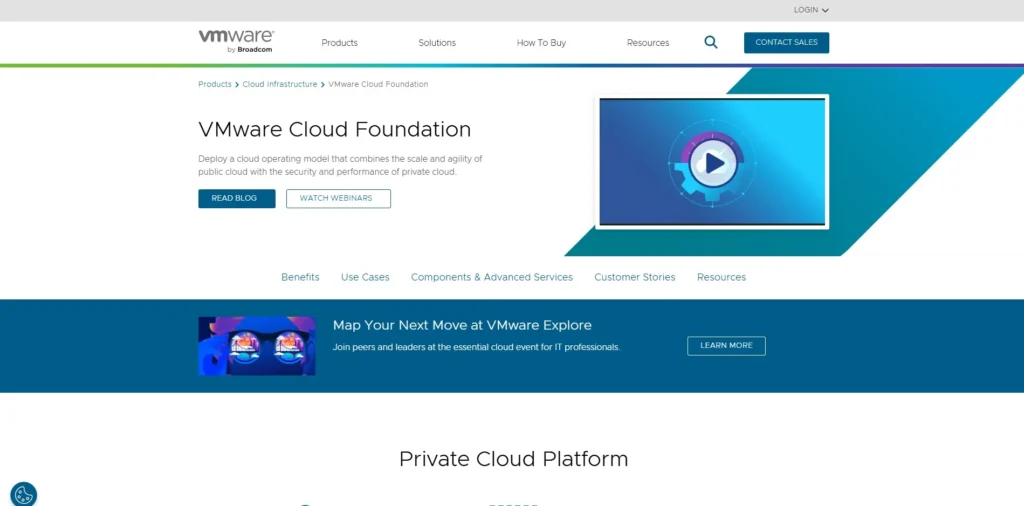
Website: https://www.vmware.com/products/aria.html
VMware Aria, formerly vRealize Suite, offers comprehensive hybrid and multi-cloud management capabilities with deep integration into VMware infrastructure. It supports AWS, Azure, and Google Cloud, delivering automation, governance, and performance monitoring in a single platform.
Aria also includes VMware CloudHealth for advanced cost management. In 2025, it remains the leading choice for enterprises already invested in VMware ecosystems that want to expand to public clouds without losing centralized control.
Key Features
- Centralized hybrid cloud management
- Integration with VMware vSphere and NSX
- CloudHealth cost optimization
- Policy and compliance enforcement
- Application performance monitoring
Best For:
VMware-centric enterprises expanding into hybrid and multi-cloud operations.
14. Microsoft Azure Arc
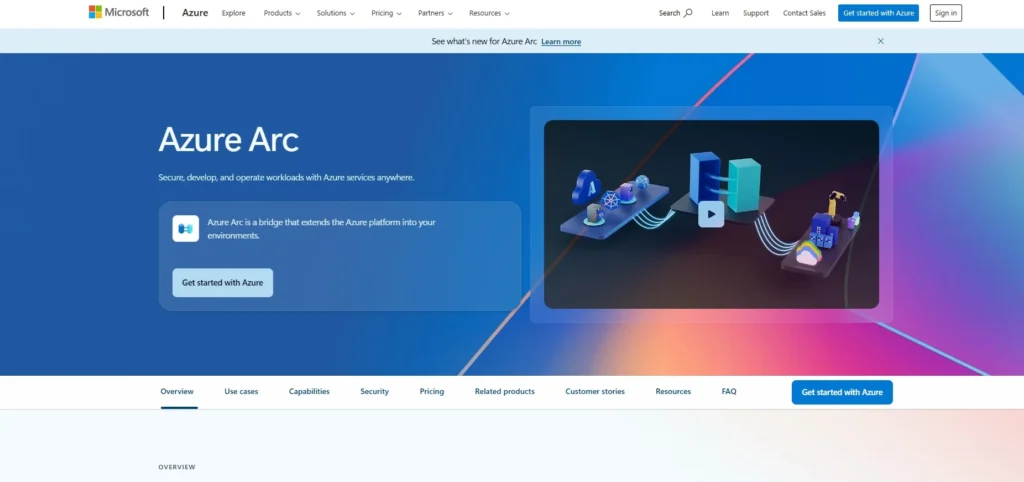
Website: https://azure.microsoft.com/en-us/products/azure-arc
Any infrastructure, including AWS, Google Cloud, on-premises servers, and edge devices, may benefit from Azure’s management, security, and governance features thanks to Microsoft Azure Arc.It enables organizations to use Azure services such as Policy, Security Center, and Monitor across hybrid and multi-cloud setups. With built-in GitOps capabilities, it integrates well into DevOps workflows.
Azure Arc is a key tool for Microsoft-aligned organizations that need consistent operations across diverse environments.
Key Features
- Hybrid and multi-cloud resource management
- Azure Policy and Security Center integration
- GitOps-based configuration management
- Multi-environment Kubernetes support
- Centralized monitoring and alerts
Best For:
Microsoft-focused enterprises managing hybrid and distributed cloud environments.
15. Google Anthos
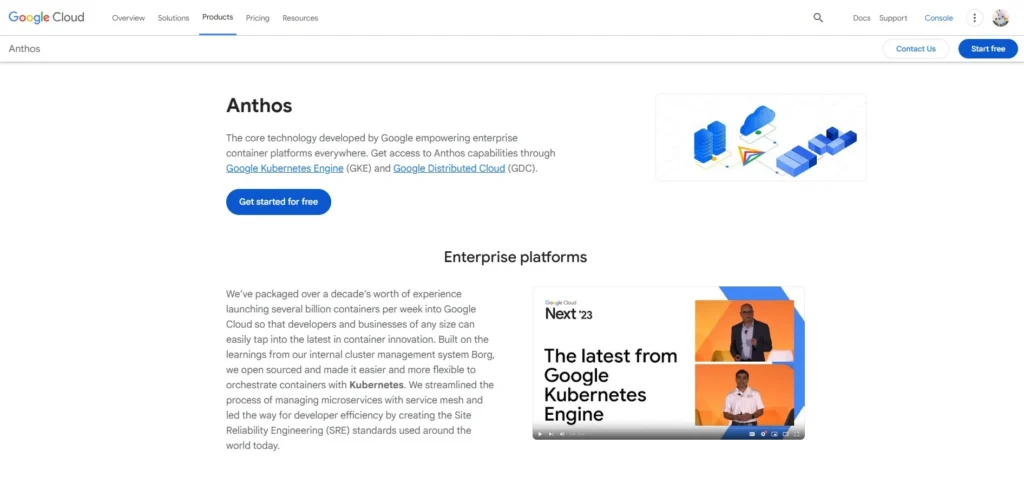
Website: https://cloud.google.com/anthos
Google Anthos is a Kubernetes-based hybrid and multi-cloud management platform designed for container-first organizations. It supports running workloads on Google Cloud, AWS, Azure, and on-premises infrastructure, with unified policy and service management.
Anthos integrates with Istio service mesh for secure and observable communication between services, and it supports CI/CD pipelines for rapid application delivery. In lates version, it’s a strong choice for enterprises modernizing applications and embracing microservices architectures.
Key Features
- Multi-cloud Kubernetes orchestration
- Istio service mesh integration
- Unified policy and configuration management
- CI/CD pipeline support
- Hybrid and edge compatibility
Best For:
Organizations adopting containerized microservices across hybrid and multi-cloud environments.
Conclusion
Managing cloud resources efficiently is no longer just about convenience, it’s about staying competitive. A well-chosen Cloud Management Platform can simplify complex tasks, reduce unnecessary costs, and give teams the tools to innovate faster. Whether your priority is cost control, automation, or security, there’s a platform suited to your business goals. By evaluating features, scalability, and ease of integration, you can invest in a CMP that not only meets today’s demands but also adapts to tomorrow’s challenges.
FAQs
1. What is a CMP?
A tool to manage, monitor, and optimize multiple cloud environments from one dashboard.
2. Why use a CMP?
For centralized control, cost savings, better security, and automation.
3. Can it lower costs?
Yes, with cost tracking and optimization features.
4. Is it for small businesses too?
Yes, many offer SMB-friendly plans.
5. Which clouds are supported?
Most cover AWS, Azure, Google Cloud, and private cloud


